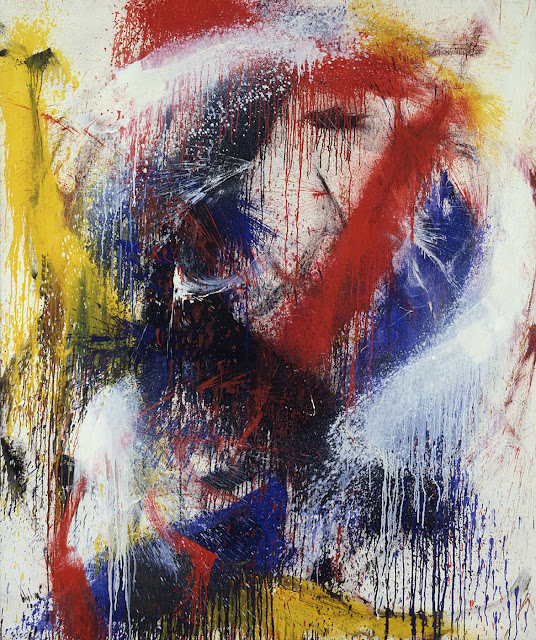Norman Bluhm (March 28, 1921 – February 3, 1999), was an American painter classified as an abstract expressionist, and as an action painter.He was born on March 28, 1921 in Chicago, Illinois. He studied under Mies van der Rohe at the then Armour (now Illinois) Institute of Technology.[1] After service in World War II with the USAAF he decided not to resume his architectural studies. Rather he studied art at the Academia de Belle Arte, Florence, Italy and at the Ecole des Beaux Arts in Paris. From 1948 until 1956 he lived in Paris. He had numerous friends in art, literature, and other creative fields. Among his close acquaintances were Joan Mitchell, Sam Francis, Jean-Paul Riopelle, Zao Wou-ki and others. He was married to Claude Souvrain until 1956. He returned to the United States in 1956. He married Carolyn Ogle in 1961. They lived in New York City until 1969 with their two children, David and Nina. From 1970 to 1980 they lived in Millbrook, New York. From 1980 to 1987 they lived in East Hampton, New York. Thereafter, they lived in East Wallingford, Vermont until Bluhm's death on February 3, 1999.
Bluhm's work has been critically praised and his works are in the collections of many major museums. His work changed throughout his career while retaining certain elements (brush strokes, use of color and line, etc.) that to the discerning viewer are obvious. Unlike some artists of note he continually challenged himself to reach new areas and artistic achievements based on his profound knowledge of art and art history, use of the human figure, color, and a passion for life. Among his more noted work are a series of poem paintings done with his good friend the poet Frank O'Hara. Shortly before Bluhm died, in 1999, Art in America editor Raphael Rubinstein predicted that this body of work would be as important to the 21st century as Cézanne’s later output was to the 20th.Wikipedia
"Norman Bluhm has created four distinct bodies of work over the nearly fifty years of his career. His purpose has been consistent throughout his career, namely to create paintings that express his spiritual vision in the most profoundly human way possible, that is, truthfully, with style and high drama. His paintings demonstrate the intimate connection between the erotic and the spiritual by virtue of their orgiastic intensity, that is, the passion and skill invested in their execution, and the extraordinary quality of light that emanates from the finished work of art. Each body of work represents a new stage in his spiritual growth, beginning in his search for himself and his own style and ending in a profoundly personal realization of unity of all things in his mature paintings."
James Harithas, Director, The Station Museum, Houston, Texas(normanbluhm.com)
James Harithas, Director, The Station Museum, Houston, Texas(normanbluhm.com)












No comments:
Post a Comment